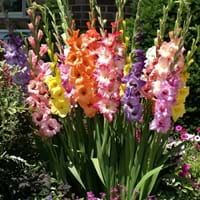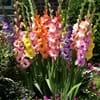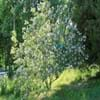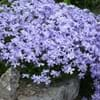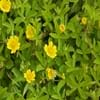Life Span
Perennial
Perennial
Type
Flowering Plants
Grass
Origin
Asia, Central Asia, Europe, Mediterranean, Northern Africa, South Africa, Western Asia
China, Japan
Types
Gladiolus abbreviatus, Gladiolus gunnisii, Gladiolus pretoriensis
Greenstripe Vivax, Moso, Weavers Bamboo, Oldhamii
Habitat
Mediterranean region, Tropical regions
Warmer regions
USDA Hardiness Zone
4-9
6-9
AHS Heat Zone
Not Available
Not Available
Sunset Zone
Not Available
Not Available
Habit
Upright/Erect
Clump-Forming
Minimum Width
Not Available
Flower Color
Orange, Pink, Red, Yellow
Not Available
Flower Color Modifier
Bicolor
Not Available
Fruit Color
Not Available
Green, Pink, Red
Leaf Color in Spring
Dark Green
Dark Green
Leaf Color in Summer
Green
Dark Green
Leaf Color in Fall
Dark Green
Dark Green
Leaf Color in Winter
Green
Dark Green
Leaf Shape
Long Broad
Long Linear
Plant Season
Spring, Summer
Not Available
Sunlight
Full Sun
Full Sun, Partial Sun, Partial shade
Growth Rate
Medium
Very Fast
Type of Soil
Average
Loam
The pH of Soil
Acidic, Alkaline, Neutral
Acidic, Neutral, Alkaline
Soil Drainage
Average
Average
Bloom Time
Not Available
Not Available
Tolerances
Drought
Wet Site, Drought
Where to Plant?
Container, Ground
Container, Ground
How to Plant?
From bulbs, Tubers
Grafting, Seedlings, Stem Planting, Transplanting
Plant Maintenance
High
Medium
Watering Requirements
occasional watering once established, Requires plenty of water during the growing season
Needs watering once a week, Use Mulches to help prevent water loss during hot and windy weather, Water Deeply
In Summer
Ample Water
Lots of watering
In Spring
Average Water
Moderate
In Winter
Thoroughly
Average Water
Soil pH
Acidic, Alkaline, Neutral
Acidic, Neutral, Alkaline
Soil Drainage Capacity
Average
Average
Sun Exposure
Full Sun
Full Sun, Partial Sun, Partial shade
Pruning
Cut upper 1/3 section when young to enhancegrowth
Do not prune during shooting season, Prune in late summer or fall, Remove damaged leaves
Fertilizers
5-10-10 fertilizer, All-Purpose Liquid Fertilizer
All-Purpose Liquid Fertilizer
Pests and Diseases
fungus
Black sooty mold, Mealybugs, Mosaic viruses, Powdery mildew, pythogens, Stem rot
Plant Tolerance
Drought
Drought
Flower Petal Number
Double
Not Available
Foliage Texture
Fine
Coarse
Foliage Sheen
Matte
Matte
Attracts
Bees, Not Available
Not Available
Allergy
allergic reaction, Skin irritation
Cyanide poisoning
Aesthetic Uses
Beautification, Bouquets, Showy Purposes
Showy Purposes
Beauty Benefits
No Beauty Benefits
Not Available
Environmental Uses
Air purification
Air purification
Medicinal Uses
constipation, Diarrhea
Clears heat, Cold, fidgeting, Treating fever, Urinary tract problems
Part of Plant Used
Flowers, Tuber
Leaves, Stem
Other Uses
Basketary, Used as Ornamental plant
Application in Handicrafts, Showy Purposes, Used As Food, Used in Furniture, Used in paper industry
Used As Indoor Plant
No
Yes
Used As Outdoor Plant
Yes
Yes
Garden Design
Cottage garden, Feature Plant
Hedges, Mixed Border
Botanical Name
Gladiolus
BAMBUSA
Common Name
Gladiolus
Bamboo, Clumping Bamboo
In Hindi
ग्लेडियोलस
Bānsa
In German
Gladiolen
Bambus
In Spanish
Gladiolus
Bambú
In Greek
γλαδιόλα
μπαμπού
In Portuguese
Gladiolus
bambu
In Latin
Gladiolus
Bamboo
Phylum
Magnoliophyta
Magnoliophyta
Class
Liliopsida
Liliopsida
Genus
Gladiolus
Acidosasa
Clade
Angiosperms, Monocots
Not Available
Subfamily
Ixioideae
Arthrostylidiinae, Arundinariinae, Bambusinae, Chusqueinae, Guaduinae, Melocanninae, Nastinae, Racemobambodinae, Shibataeinae
Season and Care of Gladiolus and Bamboo
Season and care of Gladiolus and Bamboo is important to know. While considering everything about Gladiolus and Bamboo Care, growing season is an essential factor. Gladiolus season is Spring and Summer and Bamboo season is Spring and Summer. The type of soil for Gladiolus is Average and for Bamboo is Loam while the PH of soil for Gladiolus is Acidic, Alkaline, Neutral and for Bamboo is Acidic, Neutral, Alkaline.
Gladiolus and Bamboo Physical Information
Gladiolus and Bamboo physical information is very important for comparison. Gladiolus height is 60.00 cm and width 40.00 cm whereas Bamboo height is 30.00 cm and width Not Available. The color specification of Gladiolus and Bamboo are as follows:
Gladiolus flower color: Orange, Pink, Red and Yellow
Gladiolus leaf color: Dark Green
Bamboo flower color: Not Available
- Bamboo leaf color: Dark Green
Care of Gladiolus and Bamboo
Care of Gladiolus and Bamboo include pruning, fertilizers, watering etc. Gladiolus pruning is done Cut upper 1/3 section when young to enhancegrowth and Bamboo pruning is done Do not prune during shooting season, Prune in late summer or fall and Remove damaged leaves. In summer Gladiolus needs Ample Water and in winter, it needs Thoroughly. Whereas, in summer Bamboo needs Lots of watering and in winter, it needs Average Water.
